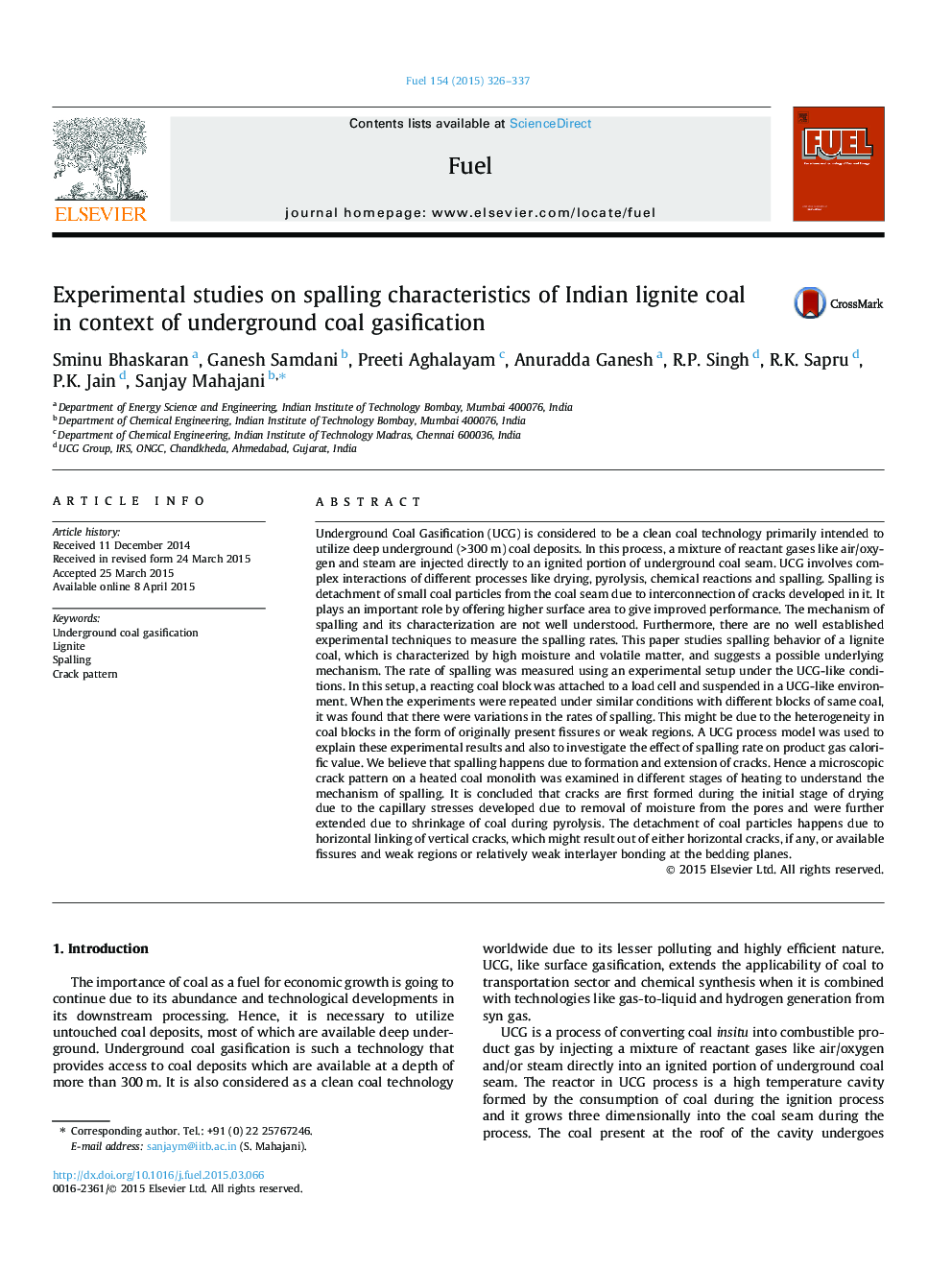| کد مقاله | کد نشریه | سال انتشار | مقاله انگلیسی | نسخه تمام متن |
|---|---|---|---|---|
| 6635521 | 461115 | 2015 | 12 صفحه PDF | دانلود رایگان |
عنوان انگلیسی مقاله ISI
Experimental studies on spalling characteristics of Indian lignite coal in context of underground coal gasification
ترجمه فارسی عنوان
مطالعات تجربی بر روی ویژگی های زهکشی ذغال سنگ قهوه ای هند در زمینه گازسیون ذغال سنگ زیرزمینی
دانلود مقاله + سفارش ترجمه
دانلود مقاله ISI انگلیسی
رایگان برای ایرانیان
کلمات کلیدی
گازسوز زغال سنگ، سنگ قیمتی، اسپلینگ، الگوی کراک،
موضوعات مرتبط
مهندسی و علوم پایه
مهندسی شیمی
مهندسی شیمی (عمومی)
چکیده انگلیسی
Underground Coal Gasification (UCG) is considered to be a clean coal technology primarily intended to utilize deep underground (>300Â m) coal deposits. In this process, a mixture of reactant gases like air/oxygen and steam are injected directly to an ignited portion of underground coal seam. UCG involves complex interactions of different processes like drying, pyrolysis, chemical reactions and spalling. Spalling is detachment of small coal particles from the coal seam due to interconnection of cracks developed in it. It plays an important role by offering higher surface area to give improved performance. The mechanism of spalling and its characterization are not well understood. Furthermore, there are no well established experimental techniques to measure the spalling rates. This paper studies spalling behavior of a lignite coal, which is characterized by high moisture and volatile matter, and suggests a possible underlying mechanism. The rate of spalling was measured using an experimental setup under the UCG-like conditions. In this setup, a reacting coal block was attached to a load cell and suspended in a UCG-like environment. When the experiments were repeated under similar conditions with different blocks of same coal, it was found that there were variations in the rates of spalling. This might be due to the heterogeneity in coal blocks in the form of originally present fissures or weak regions. A UCG process model was used to explain these experimental results and also to investigate the effect of spalling rate on product gas calorific value. We believe that spalling happens due to formation and extension of cracks. Hence a microscopic crack pattern on a heated coal monolith was examined in different stages of heating to understand the mechanism of spalling. It is concluded that cracks are first formed during the initial stage of drying due to the capillary stresses developed due to removal of moisture from the pores and were further extended due to shrinkage of coal during pyrolysis. The detachment of coal particles happens due to horizontal linking of vertical cracks, which might result out of either horizontal cracks, if any, or available fissures and weak regions or relatively weak interlayer bonding at the bedding planes.
ناشر
Database: Elsevier - ScienceDirect (ساینس دایرکت)
Journal: Fuel - Volume 154, 15 August 2015, Pages 326-337
Journal: Fuel - Volume 154, 15 August 2015, Pages 326-337
نویسندگان
Sminu Bhaskaran, Ganesh Samdani, Preeti Aghalayam, Anuradda Ganesh, R.P. Singh, R.K. Sapru, P.K. Jain, Sanjay Mahajani,
